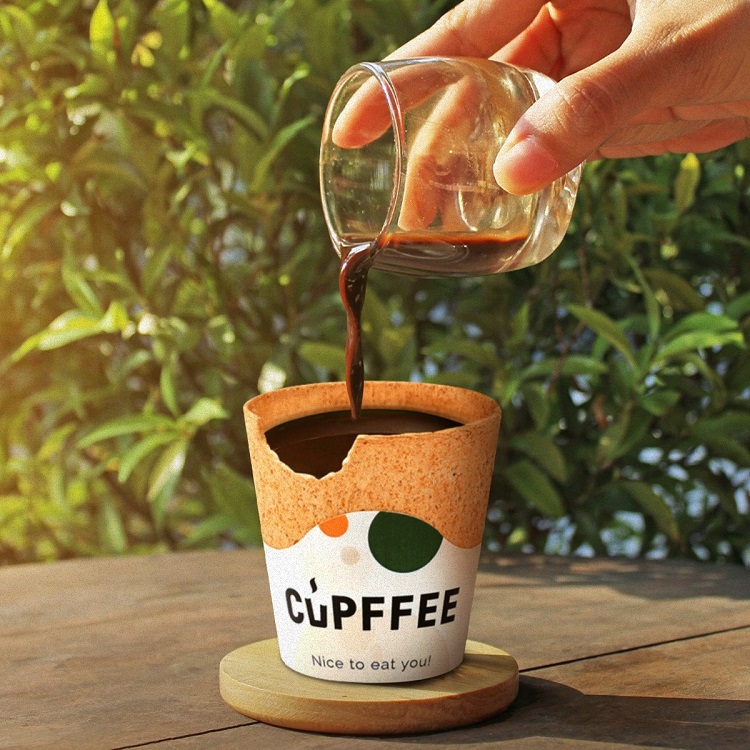
Disposable single-use espresso cups are dangerous information for the atmosphere. Predominantly created from two supplies – a paper layer and a polyethylene layer for water and warmth resistance –that are tough to separate, disposable espresso cups are thought of unrecyclable.
This makes disposal essentially the most complicated challenge of the single-use espresso cup life cycle. Based on researchers on the College of British Columbia, Canada, essentially the most energy-intensive means of the single-use espresso cup life cycle is uncooked supplies processing and manufacturing.
Single-use plastics are inflicting ‘vital’ hurt to the environment and ecosystems, famous entrepreneur Miroslav Zapryanov, who’s working to disrupt this pattern with an edible different to paper/polyethylene espresso cups.
The edible cookie cup
Bulgaria-based Cupffee was based in 2014 and moved into industrial manufacturing in 2018. The beginning-up, headed up by Zapryanov as CEO, makes its edible espresso cups from seven substances, together with oat bran, wheat flour, sugar and oil.
“It began with a dream. Again in my college years, I used to be aware of the plastic waste round me generated every day by all of the espresso retailers in my hometown,” recalled Zapryanov. “That sparked a pivotal query: what if I might exchange these disposable espresso cups with a sustainable, edible different?”
The result’s a biodegradable wafer cup free from synthetic colorants, sweeteners and preservatives. The beginning-up describes the ‘edible cookie cup’ as a ‘tasty, crunchy, and totally natural different to all disposable cups’.
Cupffee is designed for chilly or scorching drinks and may stand up to temperatures of as much as 85˚C. “The cup stays crunchy for 40 minutes and doesn’t leak for 12 hours,” Zapryanov informed FoodNavigator. “The Cupffee cups don’t alter the style of the beverage – the style is pure,” he added.
Relying on the dimensions (110ml for espressos and brief drinks, 220ml for cappuccinos, flat whites and tea and so on.) the cups have 56kcal or 105kcal. They’re additionally light-weight, coming in at 14g or 26g respectively.
Funding to drive market penetration
Cupffee is promoting its B2B providing to corporations throughout the EU, Center East, Australia and the US, and has collaborated with espresso main Lavazza.
However the start-up needs to extend its penetration in current market, broaden its gross sales and advertising and marketing crew, and stimulate demand for sustainable edibles. Securing a €1.3m grant from the European Innovation Council (EIC) and shutting a €500,000 Pre-Seed funding spherical led by Eleven Ventures will assist it obtain these objectives, advised Zapryanov.
The principle purpose of the EIC grant is to additional the technological improvements and enterprise enhancements at Cupffee, to propel the corporate in direction of ‘gobal management’ within the manufacturing and gross sales of edible cups and stirrers.
From Eleven Ventures’ perspective, Cupffee represents ‘a type of uncommon start-ups’ that has moved past the lab to ascertain an industrial course of and manufacturing. Cupfee is a licensed patent proprietor of its edible espresso cup, and having moved to a totally automated manufacturing line in 2020 now has a manufacturing capability of two.5 cups per 30 days.
“At present, with an automatic manufacturing course of, international purchasers, and the sturdy backing of Eleven Ventures, we’re poised to redefine the coffee-drinking panorama,” stated Zapryanov.
“Our mission? To rework disposable espresso tradition and drive sustainable change within the meals business, one Cupffee at a time.”
